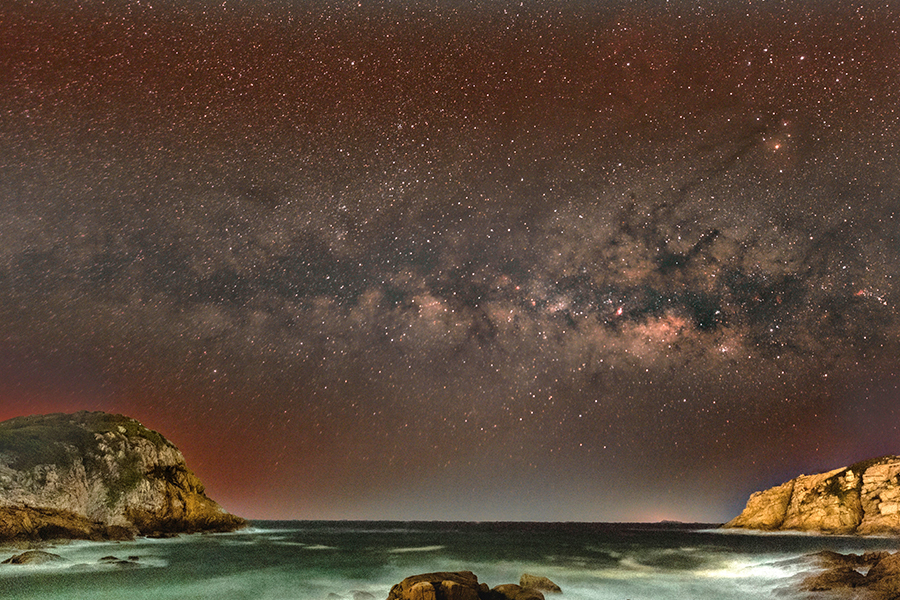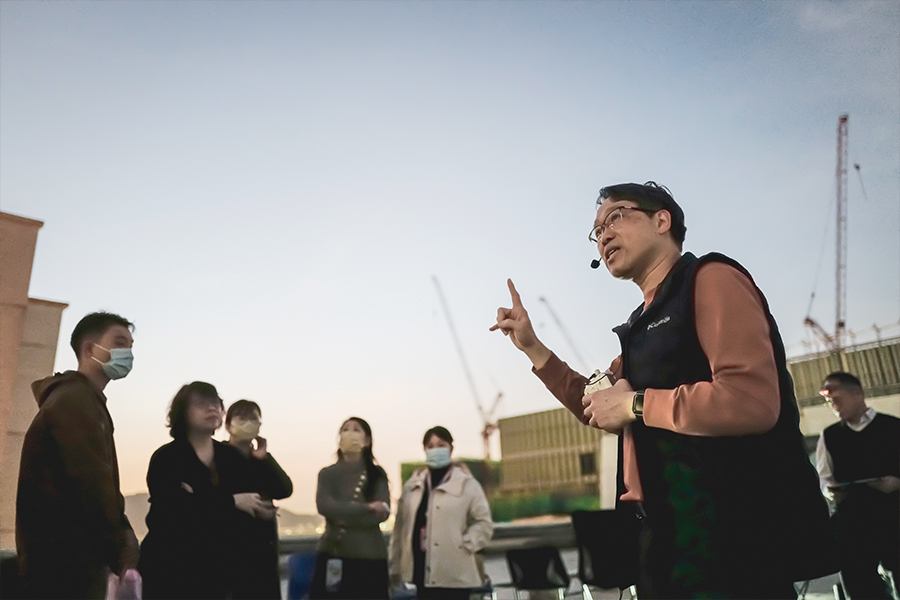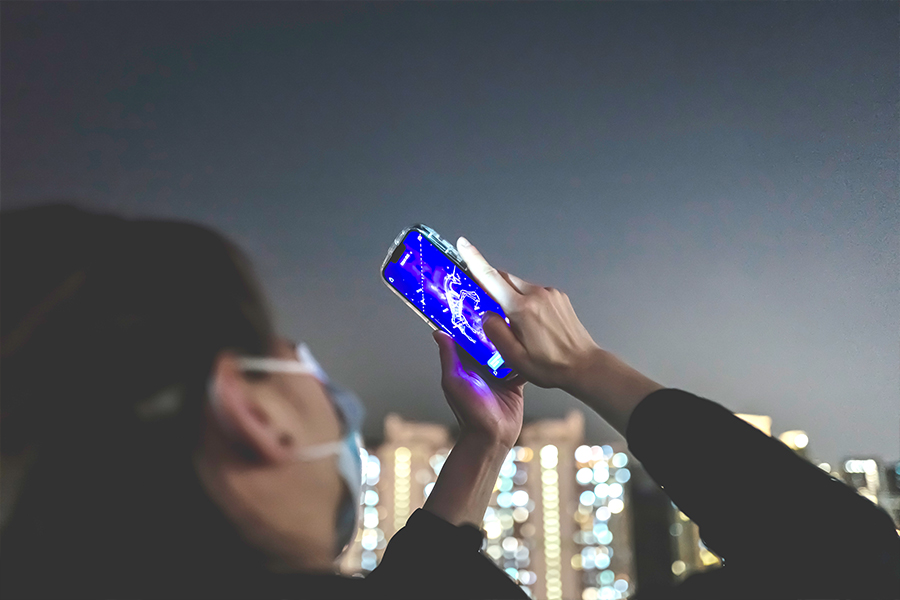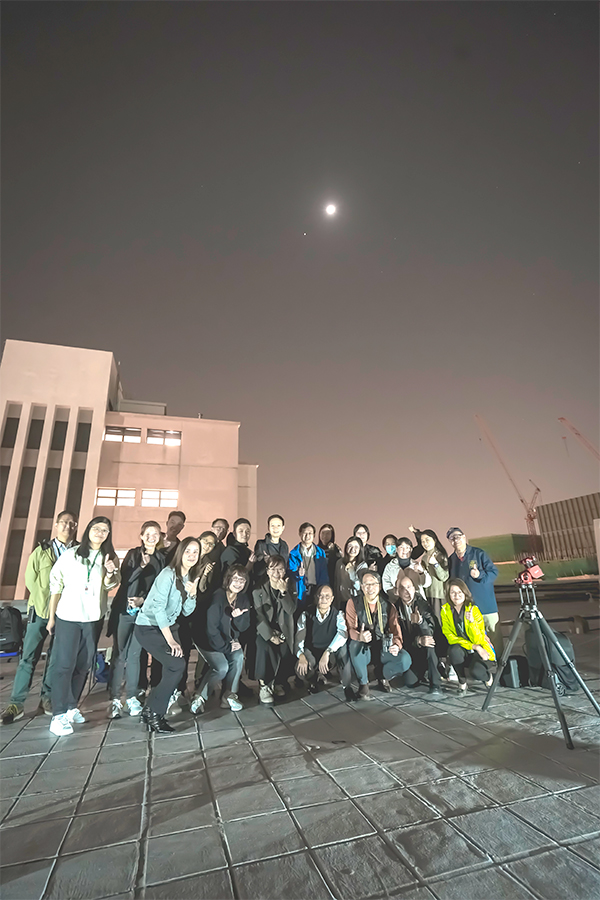Starry night reveals a galaxy of delights for amateur astronomers at hospital
 “You don’t need high-tech equipment to go stargazing. All you have to do is step outside and look up, and you will be rewarded with a beautiful starry sky,” explains veteran stargazer Dr Mok Ngai-shing, Consultant of Department of Medicine and Geriatrics at Princess Margaret Hospital (PMH), who introduced a group of colleagues to the hobby. On the sixth evening of the Chinese New Year, more than 20 staff from the Kowloon West Cluster joined Dr Mok on the rooftop of Block J at the hospital as he showed them how to use smart telescopes and introduced them to his old friends on high. “The brightest star is Sirius of constellation Canis Major. The three stars next to it form a line, resembling a belt. This is the familiar constellation Orion,” he says.
“You don’t need high-tech equipment to go stargazing. All you have to do is step outside and look up, and you will be rewarded with a beautiful starry sky,” explains veteran stargazer Dr Mok Ngai-shing, Consultant of Department of Medicine and Geriatrics at Princess Margaret Hospital (PMH), who introduced a group of colleagues to the hobby. On the sixth evening of the Chinese New Year, more than 20 staff from the Kowloon West Cluster joined Dr Mok on the rooftop of Block J at the hospital as he showed them how to use smart telescopes and introduced them to his old friends on high. “The brightest star is Sirius of constellation Canis Major. The three stars next to it form a line, resembling a belt. This is the familiar constellation Orion,” he says.
 The stargazing party – as an exceptional arrangement to be held on the hospital rooftop - was the first activity for the 100-member group after Dr Mok shared his years of stargazing experience on a staff forum. During the party, several experienced stargazers provided telescopes, cameras, and star trackers, and gave tips and advice so that novices could observe and photograph the night sky.
The stargazing party – as an exceptional arrangement to be held on the hospital rooftop - was the first activity for the 100-member group after Dr Mok shared his years of stargazing experience on a staff forum. During the party, several experienced stargazers provided telescopes, cameras, and star trackers, and gave tips and advice so that novices could observe and photograph the night sky.
Stargazing requires finding ‘the right time, place, and people’, according to Dr Mok. As long as the sky is clear and free from bright moonlight and significant light pollution, stars can be seen and photographed clearly from urban areas of Hong Kong. ‘Right people’ means a few close friends sharing the night sky together. Dr Mok particularly enjoys ‘sidewalk astronomy’. “I would set up telescopes in parks or on sidewalks and teaching passers-by how to observe the stars. I once had an elderly lady who saw Saturn’s rings for the first time through a telescope and was absolutely delighted,” he recalls. “The satisfaction of stargazing comes from sharing it with others, so I would warmly welcome any more colleagues who want to join the stargazing group.”
 One member is the appropriately named Mars, an electrical technician at PMH who was in an astronomy club at secondary school but dropped his hobby once he began work. The rooftop stargazing event made him realise how today’s advanced equipment can bring him even closer to the stars, and reignited his passion. North Lantau Hospital Patient Care Assistant Flora never imagined she could examine stars from a hospital rooftop. “I thought stargazing was only for experts,” she exclaims. “I didn’t expect that with simple equipment, we can take photos of the night sky. The atmosphere is great when you’re stargazing with colleagues. I’m really looking forward to the next event.”
One member is the appropriately named Mars, an electrical technician at PMH who was in an astronomy club at secondary school but dropped his hobby once he began work. The rooftop stargazing event made him realise how today’s advanced equipment can bring him even closer to the stars, and reignited his passion. North Lantau Hospital Patient Care Assistant Flora never imagined she could examine stars from a hospital rooftop. “I thought stargazing was only for experts,” she exclaims. “I didn’t expect that with simple equipment, we can take photos of the night sky. The atmosphere is great when you’re stargazing with colleagues. I’m really looking forward to the next event.”

Reaching for the stars
Where: Stargazing can be done in open areas with less light pollution such as rooftops, parks, and beaches. Further away from the city, recommended locations include Sai Kung Pak Tam Chung, Clearwater Bay Tai Au Mun, and High Island Reservoir.What to bring: The most basic equipment for stargazing is your eyes. You can also use a pair of binoculars and download a real-time digital star map on your phone. For more advanced stargazing, you can use a smart telescope.
When: Different constellations can be observed in different seasons. For example, during winter, you can see the Winter Triangle consisting of three bright stars from the constellations Canis Major, Canis Minor, and Orion. From March to May, you can observe the Great Diamond which comprises four bright stars from the constellations Canes Venatici, Leo, Virgo, and Boötes.